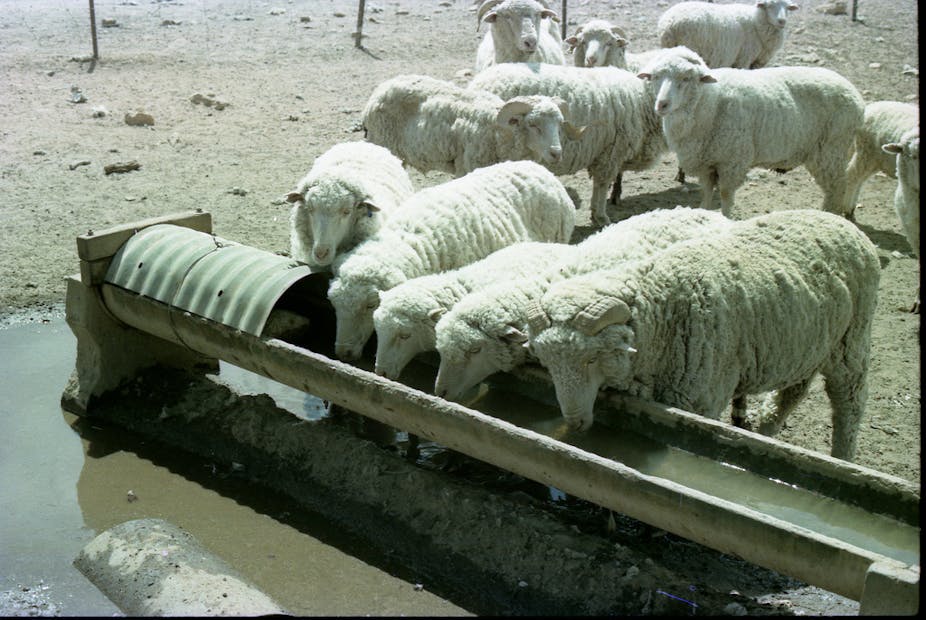There are many good reasons why the general public, and in particular farmers, are concerned about coal seam gas (CSG) extraction. There are major gaps in our knowledge about the future impacts of CSG production in Australia.
With respect to groundwater, the time to impact can be long (decades or more). Once a problem is detected it could be too late to do anything. Thus the short term benefits obtained by one generation could have long-lasting impacts on future generations.
CSG production can be done with minimum impact on adjacent groundwater systems, but like any of these complex operations there is always a risk an accident will happen. And when it does happen what will that impact be? This needs to be studied up-front.
There are many pressures on access to water. We need better management of water to protect our rivers and wetlands. We still don’t have a comprehensive working plan for the Murray-Darling Basin (though this may be available soon).
The implementation of changes in the MDB has been controversial. Many irrigation farmers have had reduced allocations as a result of environmental concerns. Now the farming sector is feeling the pressures from the expanding coal mining, underground coal mining, and coal seam gas sectors.
Protecting our agricultural production is important. Oxfam has just released a report raising concerns about future food production and distribution. Australia is a major exporter of food, and some of the proposed regions for CSG production overlap with our most productive agricultural regions.
In the Condamine, Gwydir and Namoi catchments, groundwater is extracted from the alluvial aquifers that overlay the coal seams. These coal seams may be used for gas production in the future. For some farmers in these catchments groundwater is their only major water supply.
For irrigators who also have a surface water license, groundwater is an important source of water during our extended droughts. It is natural that the farmers are concerned about CSG production, when water is critical for productive farming.
Water is needed for CSG production. The CSG sector is small at the moment, but some of the projections for its expansion indicate the CSG sector will need significant water supplies.
It doesn’t matter if the water is obtained from surface water or groundwater – CSG will have a major impact on the water balance at a local scale. The cumulative impacts have not been studied.
In Queensland, CSG producers have not yet satisfactorily demonstrated how they will manage the megalitres of poor quality saline water they will bring to the surface. The solution should be presented upfront and not be a work in progress.
There have been no background surveys to quantify the natural level of organics (including methane) for the aquifers of interest. Without background surveys, we won’t know if these levels have been added to by CSG production. We need to be able to separate the impact of CSG production from natural background levels.
Research from the USA shows methane contamination of groundwater can occur up to one kilometre away from gas production sites. This depends on the local geology, borehole installation procedures and method of operation.
In regions where the formations between the deep coal seams and the overlying alluvial aquifers have few joints or faults, and have low permeability, it is unlikely CSG production will have an impact on the shallow alluvial aquifers.
But some of the proposed methods of production will extract and re-inject megalitres of groundwater, both above and below the coal seams, causing local variations in the hydraulic gradients (slope of the water table) and potentially affecting adjacent aquifers.
Also, if a fault is nearby, it can be activated by the fracturing procedures. This is of importance for CSG developments near urban centers (for example St. Peters in Sydney).
I am not aware of any 3D flow simulation modelling results in the public domain that have attempted to quantify the migration of fluids from the proposed production zones to the fresh water aquifers used by the irrigation sector.
There has been a lack of good information provided to the general public to help them understand and visualise the impacts of CSG production. To inform the debate about the expansion of the CSG sector, 3D geological models and 3D flow simulation results need to be made publicly available.
The research required is complex and costly (millions of dollars) and will take several years if done correctly. Installing monitoring boreholes, running chemical tests and building 3D flow simulation models are all expensive activities.
That said, these studies are needed now before the sector gets too large.
Of critical importance is the good communication of the results. There will be regions in Australia where CSG production can be done with minimal local impact (although it will contribute to greenhouse gases). There will be other areas where concerns will be highlighted.
At present we don’t have good scientific information informing the debate. We have not done the necessary homework to quantify the cumulative impacts of surface coal mining, underground coal mining, irrigation farming, dryland farming, and coal seam gas production.
While we have a situation where the public debate is not being informed by good balanced information there will be conflict.
Good information cannot be made available unless the appropriate research is funded.

